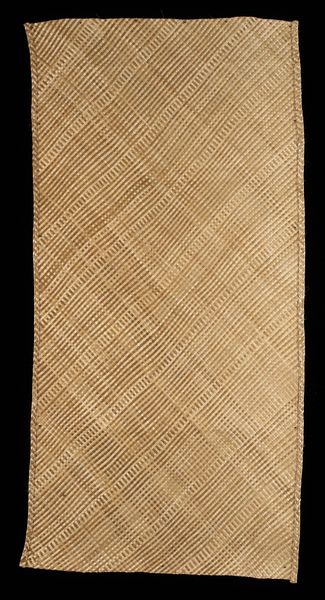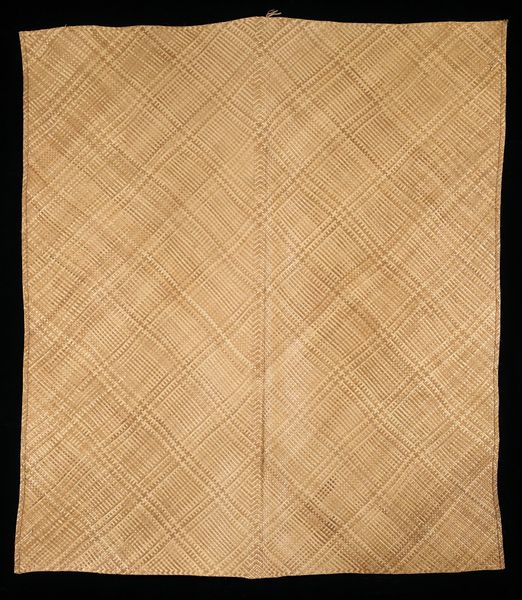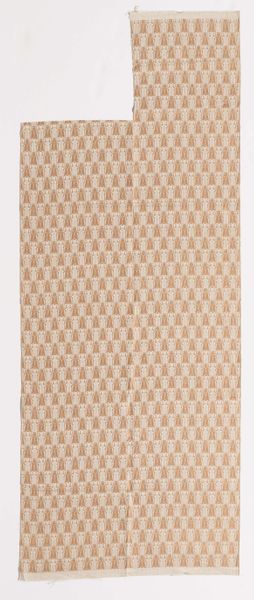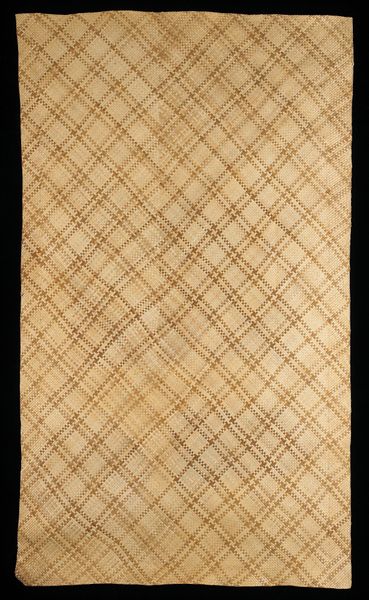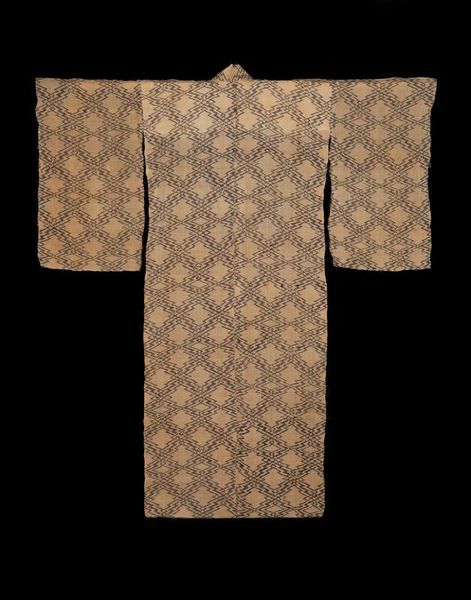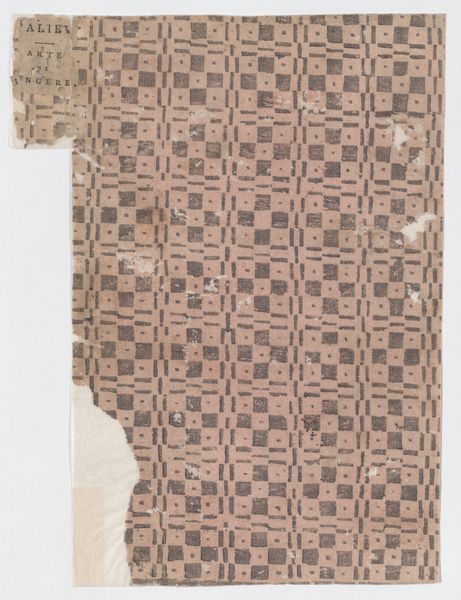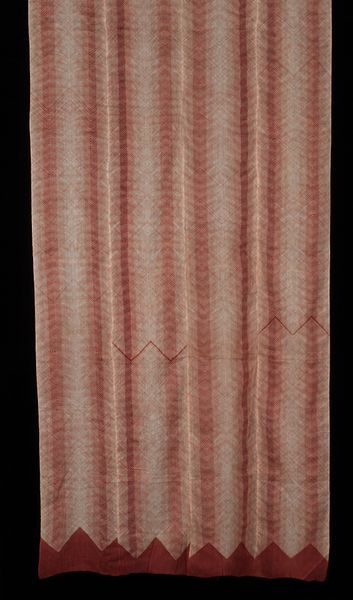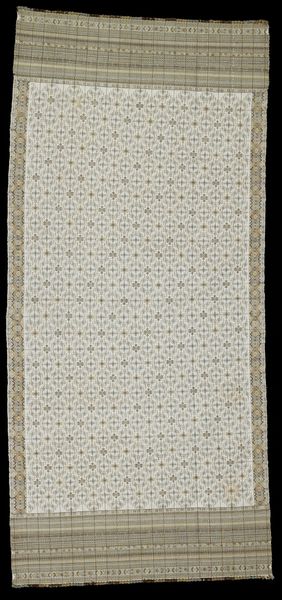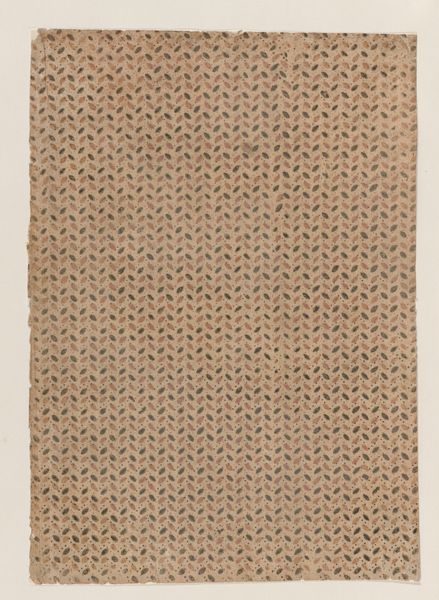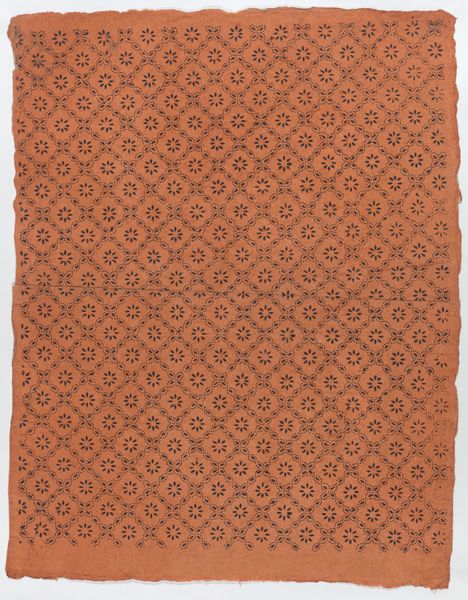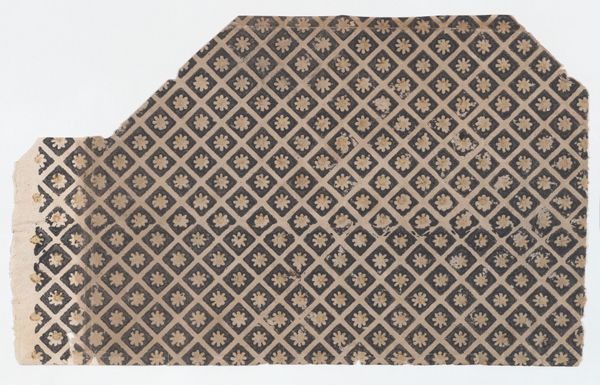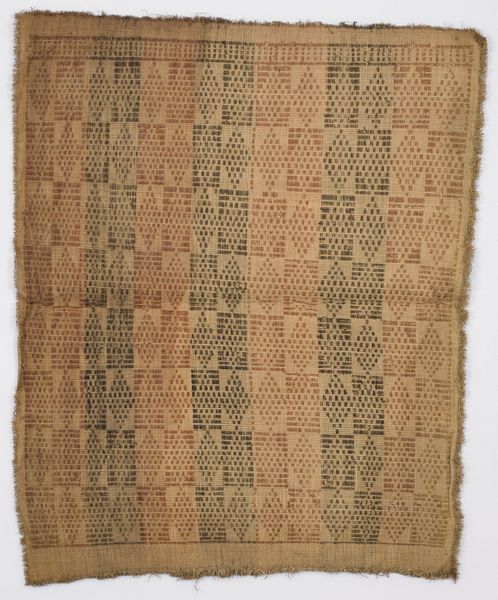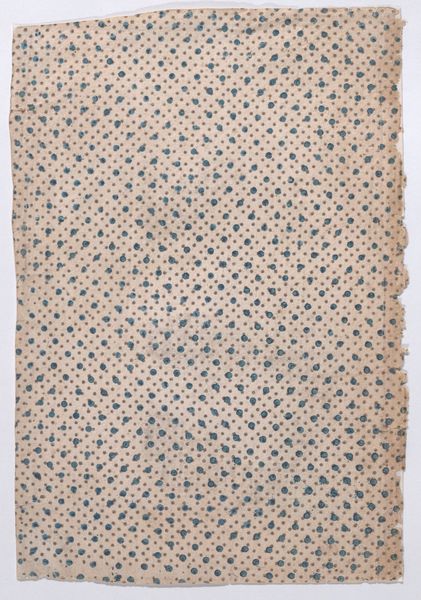
fibre-art, weaving, textile
#
pattern heavy
#
natural stone pattern
#
fibre-art
#
weaving
#
textile
#
geometric pattern
#
repetitive shape and pattern
#
organic pattern
#
geometric
#
repetition of pattern
#
vertical pattern
#
pattern repetition
#
layered pattern
#
combined pattern
Dimensions: 76 3/4 x 38 5/16 in. (194.95 x 97.31 cm)
Copyright: Public Domain
Curator: Let's turn our attention to a remarkable textile from the early 20th century: a Ceremonial Mat currently held here at the Minneapolis Institute of Art. Editor: My first thought is, wow, what incredible patience went into creating that piece. It feels almost meditative. Curator: Absolutely. These mats weren’t simply decorative. Considering them solely for their aesthetic qualities obscures their deeper socio-political and spiritual significance. The weaving, the act of creation, often embodied communal values and served as a form of cultural preservation. Editor: How so? Woven mats are such a basic item across so many cultures, but calling this a “Ceremonial Mat” clearly indicates it holds more meaning. How did its use impact its culture? Curator: It’s impossible to speak about a single cultural narrative, but weaving traditions in many Indigenous communities were historically tied to female labor and knowledge, making textiles a powerful medium for asserting identity and resisting colonial influences. The production was embedded in kinship and ritual, serving purposes of both cultural continuity and active resistance to systemic oppression. The design itself functions as a record of historical events and complex cosmological principles. Editor: And does the choice of a geometric, repeating pattern amplify its cultural function, do you think? The limited range of beige hues definitely directs focus toward pattern, rhythm, and the interplay between light and shadow. Curator: Indeed, while the geometric patterns are visually striking, it’s important to remember that designs like these aren’t simply about aesthetics. They served mnemonic functions, narrating creation myths, delineating social hierarchies, or conveying sacred knowledge accessible only to initiated members of a community. So to read the pattern accurately requires insider knowledge, to truly understand its intended impact. Editor: Thinking about this object through an intersectional lens emphasizes how art making can be a form of agency and resistance. Even simple materials can become complex political tools. Curator: Precisely, and studying these art objects carefully shows us how historical textiles play a crucial part in helping us comprehend issues that still shape us today. Editor: This mat feels both ancient and powerfully relevant. It definitely enriches how we view art history’s connections to contemporary culture.
Comments
No comments
Be the first to comment and join the conversation on the ultimate creative platform.
